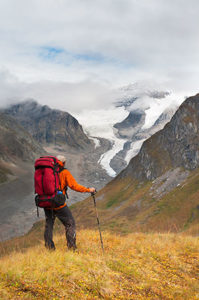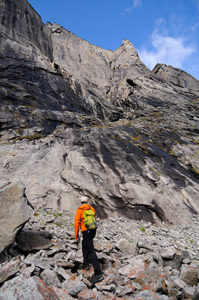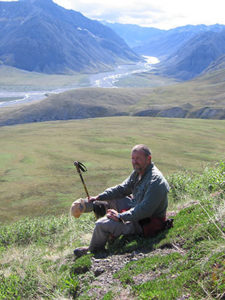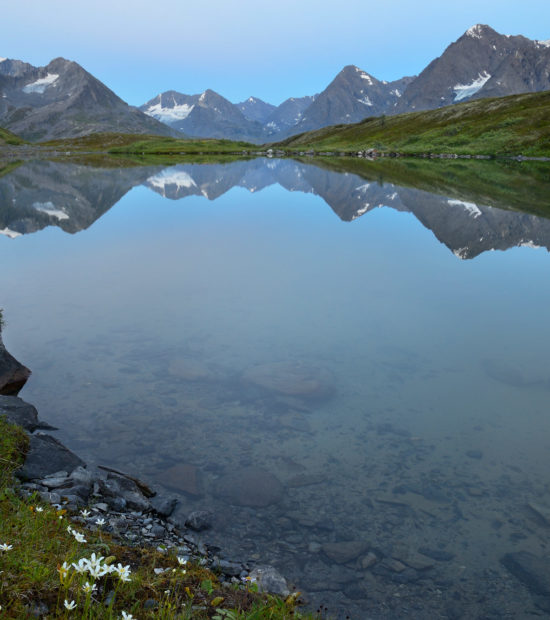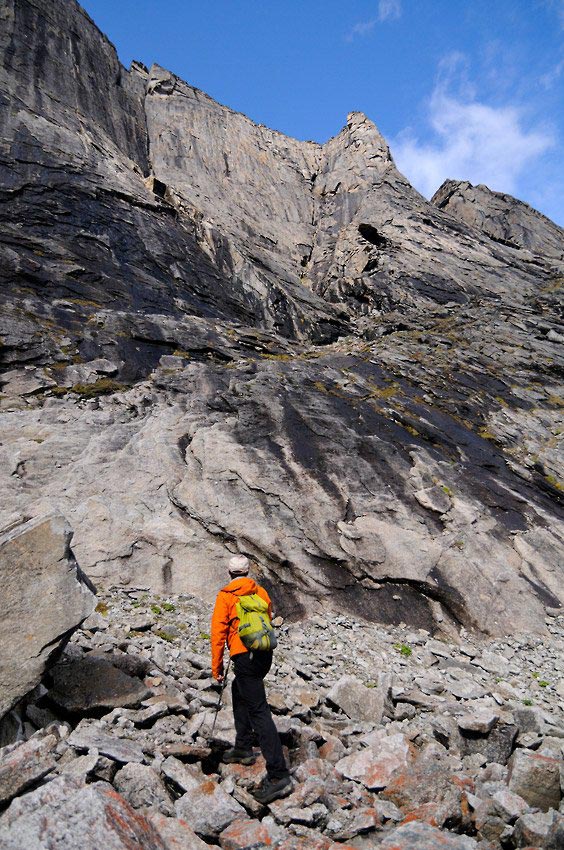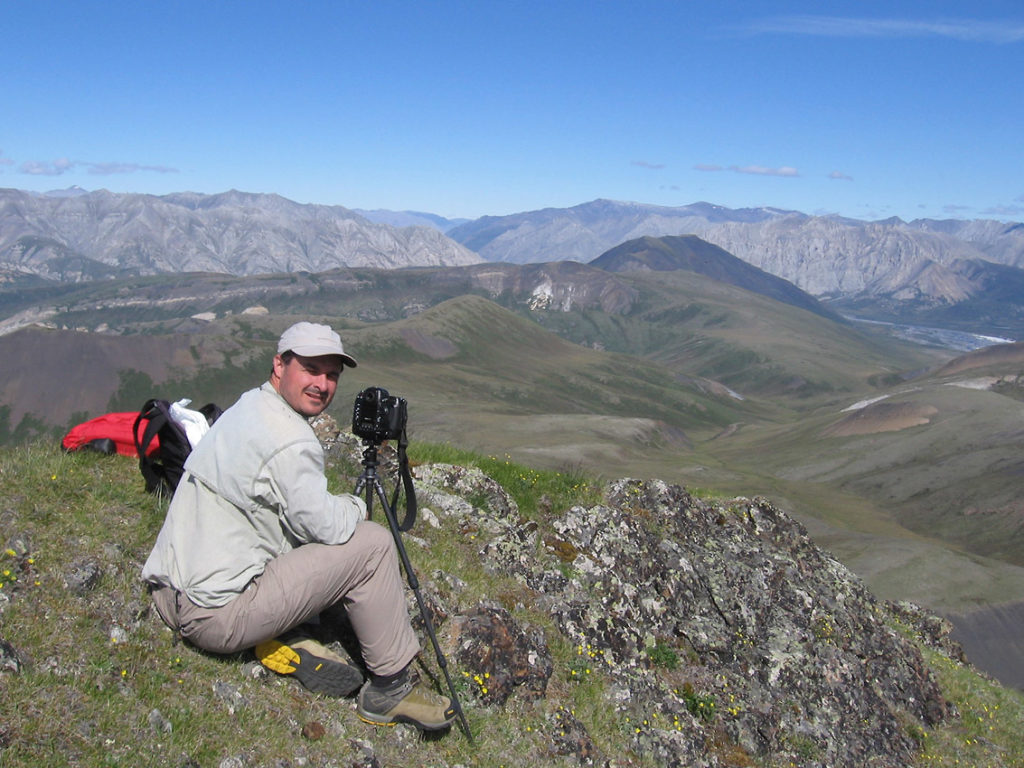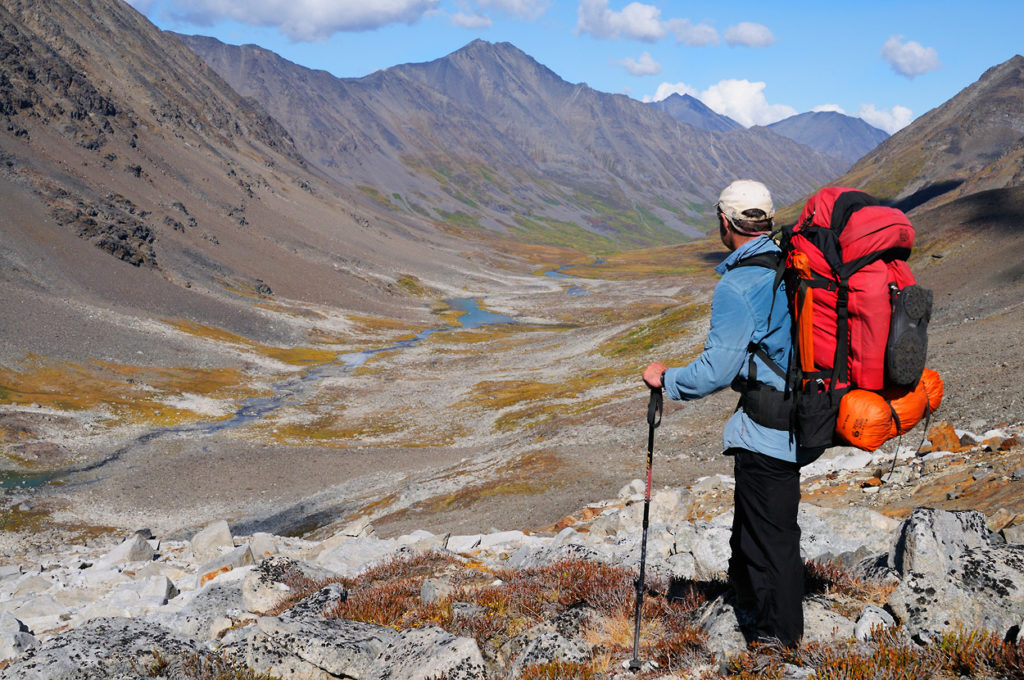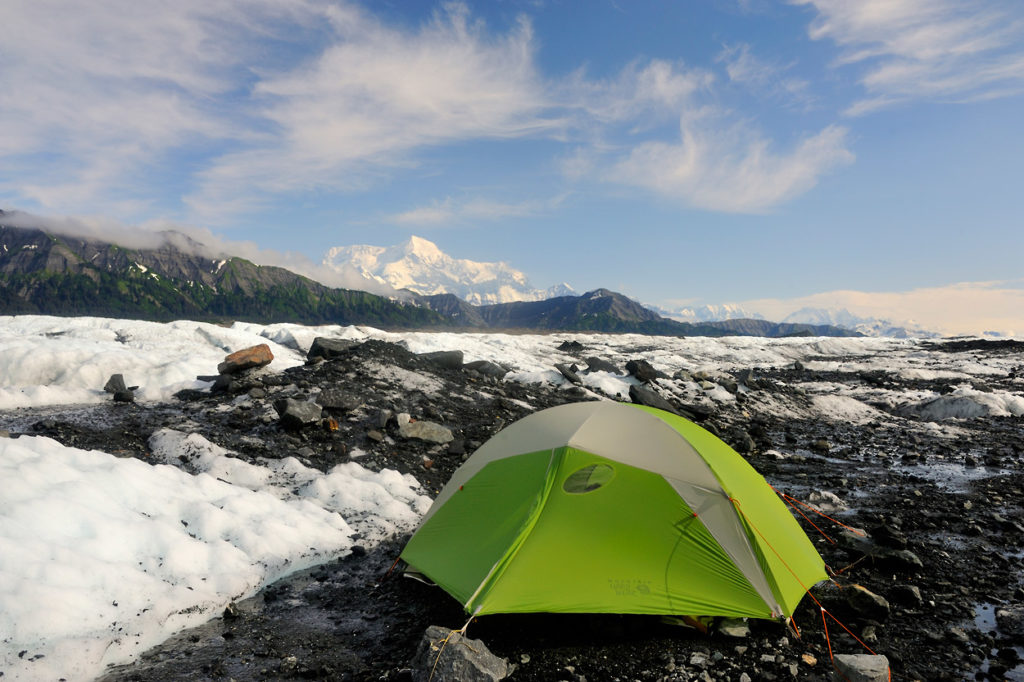Backpacking – The Perfect Way to Visit The Wild.
Expeditions Alaska offer guided Alaska backpacking trips for individuals and small groups (* group sizes are limited to a maximum of 5 participants) in various wilderness regions in Alaska. Wrangell-St. Elias National Park is home to the majority of our backpacking trips. We also guide backpacking trips in the Brooks Mountains of Gates of the Arctic National Park. The Chugach Mountains in the Kenai Peninsula are another option.
Every year we guide backpacking trips, rafting and packrafting trips in the Arctic National Wildlife Refuge, or ANWR. You’ll find a lot of information on these pages about each particular trip.
Many of the backpacking trips in Alaska involve taking a bush plane flight into otherwise inaccessible wilderness, where we spend anywhere from 5-14 days hiking, exploring, backpacking, relaxing and enjoying the best which the backcountry of North America has to offer.
We specialize in multi-day guided backpacking trips catered singularly to the needs of each particular client. This means trip lengths can vary. The degree of difficulty each trip involves. The skills and experience of the participants matter. Those seeking a more arduous and rigorous hiking trip can be accommodated as well as beginner backpackers.
Most of our trips are 5-10 long backpacking trips. We fly in and fly out of our destination in a small bushplane. It’s remote, wild country with a variety of terrain and landscapes.
We also run custom backpacking trips as well as guide an exploratory trip each summer. These trips are great for those hardy folks with some experience looking for something a little bit different. Inquire for details.

A Trail of Glory. Backpacking the Arctic National Wildlife Refuge
On a scale of 1 – 5, five being the most challenging, three hiking boots is smack in the middle.
1 boot = basecamp/dayhike easy
2 boots = easier backpacking trip
3 boots = intermediate level trip
4 boots = intermediate to advanced backpacking
5 boots = ask yourself are you really ready for this?
Expect whatever level you think might best fit you to be one level LOWER on our scale. Hiking here in Alaska is generally a step or three above what you’ll find in the Lower 48 states.
If you consider yourself up for an intermediate level hike, for example, assume that a trip rated intermediate here will probably be a bit tougher than you’re expecting; not impossible, but harder than you think. Intermediate level trips don’t mean you won’t be challenged, won’t struggle at times, and won’t have any easy sections either. On any trip you’ll probably find some easy sections, some harder, and some are challenging.
Also, understand that all these rating are so completely subjective that they’re not entirely all together practical. They’re a VERY loose idea of how the trips might compare to one another, for some people.
Lastly, understand that even a trip we might rate as “intermediate” (3-4 hiking boots) may still have some difficulty at times. Weather changes things. There may be a tough steep climb on the route that takes a few hours.
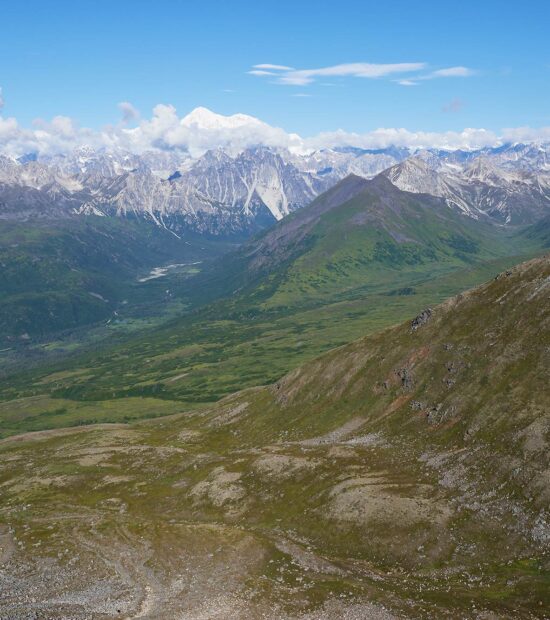
Backpack to the Future. Our newest trip to Alaska’s oldest National Park
On a scale of 1 – 5, five being the most challenging, three hiking boots is smack in the middle.
1 boot = basecamp/dayhike easy
2 boots = easier backpacking trip
3 boots = intermediate level trip
4 boots = intermediate to advanced backpacking
5 boots = ask yourself are you really ready for this?
Expect whatever level you think might best fit you to be one level LOWER on our scale. Hiking here in Alaska is generally a step or three above what you’ll find in the Lower 48 states.
If you consider yourself up for an intermediate level hike, for example, assume that a trip rated intermediate here will probably be a bit tougher than you’re expecting; not impossible, but harder than you think. Intermediate level trips don’t mean you won’t be challenged, won’t struggle at times, and won’t have any easy sections either. On any trip you’ll probably find some easy sections, some harder, and some are challenging.
Also, understand that all these rating are so completely subjective that they’re not entirely all together practical. They’re a VERY loose idea of how the trips might compare to one another, for some people.
Lastly, understand that even a trip we might rate as “intermediate” (3-4 hiking boots) may still have some difficulty at times. Weather changes things. There may be a tough steep climb on the route that takes a few hours.
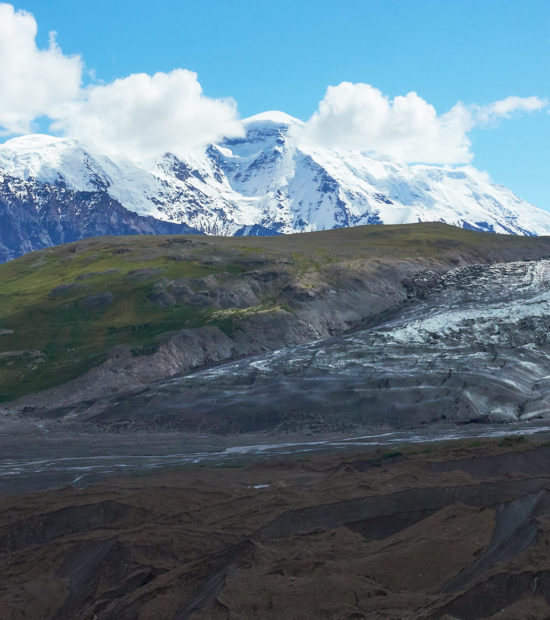
Backpack the heart of the Wrangell Mountains. Explore America’s Largest National Park.
On a scale of 1 – 5, five being the most challenging, three hiking boots is smack in the middle.
1 boot = basecamp/dayhike easy
2 boots = easier backpacking trip
3 boots = intermediate level trip
4 boots = intermediate to advanced backpacking
5 boots = ask yourself are you really ready for this?
Expect whatever level you think might best fit you to be one level LOWER on our scale. Hiking here in Alaska is generally a step or three above what you’ll find in the Lower 48 states.
If you consider yourself up for an intermediate level hike, for example, assume that a trip rated intermediate here will probably be a bit tougher than you’re expecting; not impossible, but harder than you think. Intermediate level trips don’t mean you won’t be challenged, won’t struggle at times, and won’t have any easy sections either. On any trip you’ll probably find some easy sections, some harder, and some are challenging.
Also, understand that all these rating are so completely subjective that they’re not entirely all together practical. They’re a VERY loose idea of how the trips might compare to one another, for some people.
Lastly, understand that even a trip we might rate as “intermediate” (3-4 hiking boots) may still have some difficulty at times. Weather changes things. There may be a tough steep climb on the route that takes a few hours.
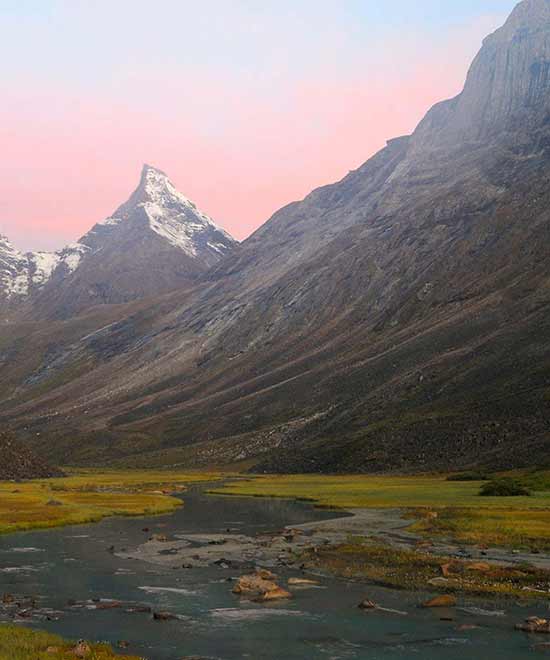
Access the Alpine. A Remarkable Arctic Adventure.
On a scale of 1 – 5, five being the most challenging, five hiking boots is right up there.
1 boot = basecamp/dayhike easy
2 boots = easier backpacking trip
3 boots = intermediate level trip
4 boots = intermediate to advanced backpacking
5 boots = ask yourself are you really ready for this?
Expect whatever level you think might best fit you to be one level LOWER on our scale. Hiking here in Alaska is generally a step or three above what you’ll find in the Lower 48 states.
Expect it to be tougher than you think it will. At least in part, anyway. Some sections will inevitably be easier. Some will make you feel it.
One of the best hikers I’ve walked with, Ben, said it perfectly one day, as we traversed a step sidehill on the Southern Traverse. “Man, Alaska just beats you up, doesn’t it?”
And he’s right. It does. Don’t be fooled by the low mileages and the lower elevations. The catch is the difficulty of traversing rugged country with no trails. However much you think that might impact you, double it.
You need to be athletic, well balanced, in good shape, and an experienced backpacker for this kind of trip. If you’re not that .. well, don’t say you weren’t well warned.
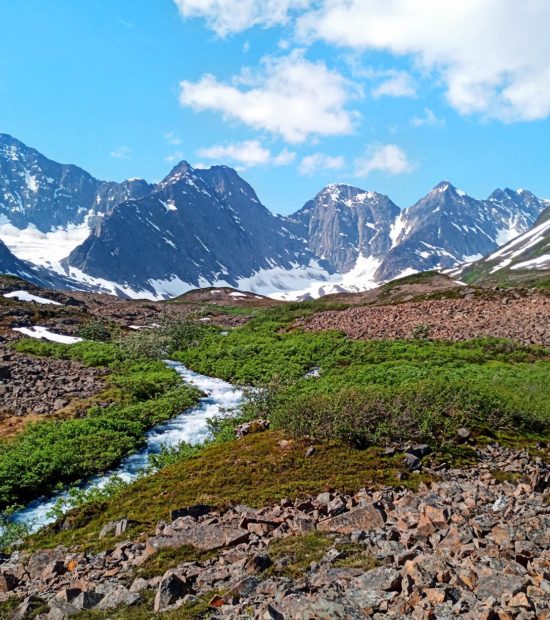
“You have to kiss a lot of frogs before you find your prince”
On a scale of 1 – 5, five being the most challenging, two hiking boots is at the easier end of the spectrum.
1 boot = basecamp/dayhike easy
2 boots = easier backpacking trip
3 boots = intermediate level trip
4 boots = intermediate to advanced backpacking
5 boots = ask yourself are you really ready for this?
Expect whatever level you think might best fit you to be one level LOWER on our scale. Hiking here in Alaska is generally a step or three above what you’ll find in the Lower 48 states.
Realize that backpacking is never “easy”. You’re carrying from 35-50+ pounds on your back day after day. You’ll be hiking for a number of hours each day (varies trip to trip, day to day), and that’s not “easy” for most people.
That said, our “2 hiking boots” level should meet the need for most novice backpackers, and are generally what I recommend for families with younger kids, etc as well. Terrain challenges aren’t usually a problem, and the walking is somewhat more orthodox. You won’t be traversing 1 mile of steep sidehill covered in slippery rocks, or snaking through dense thickets of alder and willow.
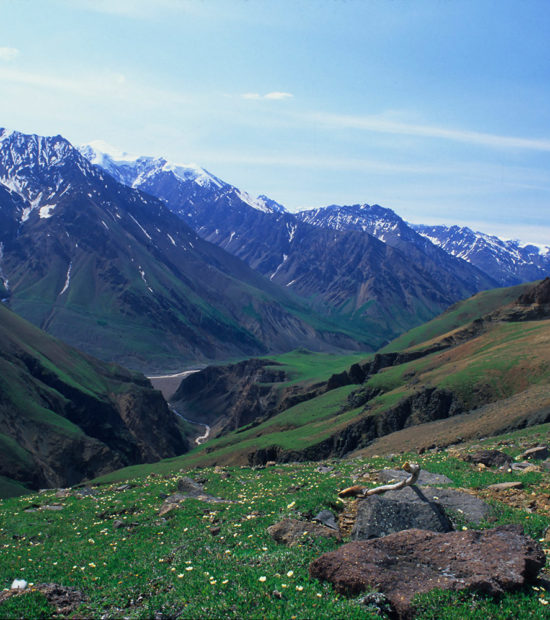
Meet the Goat Trail. Prepare for Adventure.
On a scale of 1 – 5, five being the most challenging, four hiking boots is toward the tougher end of the course.
1 boot = basecamp/dayhike easy
2 boots = easier backpacking trip
3 boots = intermediate level trip
4 boots = intermediate to advanced backpacking
5 boots = ask yourself are you really ready for this?
Expect whatever level you think might best fit you to be one level LOWER on our scale. Hiking here in Alaska is generally a step or three above what you’ll find in the Lower 48 states. We might call something intermediate-advanced, and it may well be the toughest trip you’ve ever done in your life. Just understand that these metrics aren’t perfect.
You’ll find some good, easier walking, but also encounter sidehill or moraine and talus, or dense brush such as alder or willow.
The challenges aren’t generally so much in the distance we cover, or the elevation gain and loss. Most backpackers are surprised just how far we do NOT go on a backpacking trip in Alaska. The challenges are in the terrain you’re walking over, and how well you adapt to those. Some people do great walking on boulders, and other people struggle to the very last stone. I can’t tell you how well you’ll do on a specific route, but we’ll do our best to work with you to match you with a trip that fits your experience and backpacking level.
Most people will call these trips tough. They just haven’t done the 5 hiking boot trips.
On a scale of 1 – 5, five being the most challenging, three hiking boots is smack in the middle.
1 boot = basecamp/dayhike easy
2 boots = easier backpacking trip
3 boots = intermediate level trip
4 boots = intermediate to advanced backpacking
5 boots = ask yourself are you really ready for this?
Expect whatever level you think might best fit you to be one level LOWER on our scale. Hiking here in Alaska is generally a step or three above what you’ll find in the Lower 48 states.
If you consider yourself up for an intermediate level hike, for example, assume that a trip rated intermediate here will probably be a bit tougher than you’re expecting; not impossible, but harder than you think. Intermediate level trips don’t mean you won’t be challenged, won’t struggle at times, and won’t have any easy sections either. On any trip you’ll probably find some easy sections, some harder, and some are challenging.
Also, understand that all these rating are so completely subjective that they’re not entirely all together practical. They’re a VERY loose idea of how the trips might compare to one another, for some people.
Lastly, understand that even a trip we might rate as “intermediate” (3-4 hiking boots) may still have some difficulty at times. Weather changes things. There may be a tough steep climb on the route that takes a few hours.
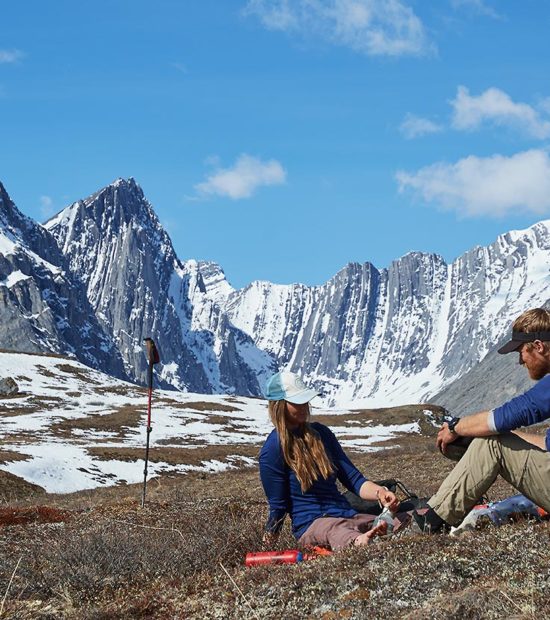
The Brooks Range. Backpacking in the Arctic just got even better.
On a scale of 1 – 5, five being the most challenging, five hiking boots is right up there.
1 boot = basecamp/dayhike easy
2 boots = easier backpacking trip
3 boots = intermediate level trip
4 boots = intermediate to advanced backpacking
5 boots = ask yourself are you really ready for this?
Expect whatever level you think might best fit you to be one level LOWER on our scale. Hiking here in Alaska is generally a step or three above what you’ll find in the Lower 48 states.
Expect it to be tougher than you think it will. At least in part, anyway. Some sections will inevitably be easier. Some will make you feel it.
One of the best hikers I’ve walked with, Ben, said it perfectly one day, as we traversed a step sidehill on the Southern Traverse. “Man, Alaska just beats you up, doesn’t it?”
And he’s right. It does. Don’t be fooled by the low mileages and the lower elevations. The catch is the difficulty of traversing rugged country with no trails. However much you think that might impact you, double it.
You need to be athletic, well balanced, in good shape, and an experienced backpacker for this kind of trip. If you’re not that .. well, don’t say you weren’t well warned.
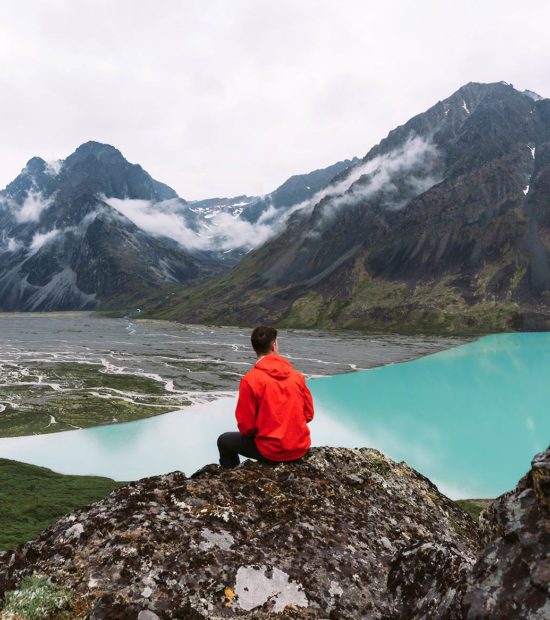
Trek Turquoise to Twin. Trundle the Tundra and saunter the Alaskan Southwest.
On a scale of 1 – 5, five being the most challenging, three hiking boots is smack in the middle.
1 boot = basecamp/dayhike easy
2 boots = easier backpacking trip
3 boots = intermediate level trip
4 boots = intermediate to advanced backpacking
5 boots = ask yourself are you really ready for this?
Expect whatever level you think might best fit you to be one level LOWER on our scale. Hiking here in Alaska is generally a step or three above what you’ll find in the Lower 48 states.
If you consider yourself up for an intermediate level hike, for example, assume that a trip rated intermediate here will probably be a bit tougher than you’re expecting; not impossible, but harder than you think. Intermediate level trips don’t mean you won’t be challenged, won’t struggle at times, and won’t have any easy sections either. On any trip you’ll probably find some easy sections, some harder, and some are challenging.
Also, understand that all these rating are so completely subjective that they’re not entirely all together practical. They’re a VERY loose idea of how the trips might compare to one another, for some people.
Lastly, understand that even a trip we might rate as “intermediate” (3-4 hiking boots) may still have some difficulty at times. Weather changes things. There may be a tough steep climb on the route that takes a few hours.
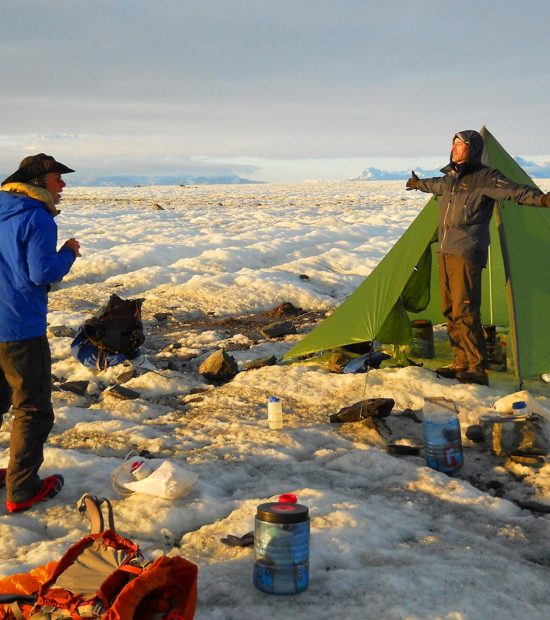
A Backpacking Trip Like Nothing You’ve Ever Done Before. Or Will Again. I Promise.
On a scale of 1 – 5, five being the most challenging, five hiking boots is right up there.
1 boot = basecamp/dayhike easy
2 boots = easier backpacking trip
3 boots = intermediate level trip
4 boots = intermediate to advanced backpacking
5 boots = ask yourself are you really ready for this?
Expect whatever level you think might best fit you to be one level LOWER on our scale. Hiking here in Alaska is generally a step or three above what you’ll find in the Lower 48 states.
Expect it to be tougher than you think it will. At least in part, anyway. Some sections will inevitably be easier. Some will make you feel it.
One of the best hikers I’ve walked with, Ben, said it perfectly one day, as we traversed a step sidehill on the Southern Traverse. “Man, Alaska just beats you up, doesn’t it?”
And he’s right. It does. Don’t be fooled by the low mileages and the lower elevations. The catch is the difficulty of traversing rugged country with no trails. However much you think that might impact you, double it.
You need to be athletic, well balanced, in good shape, and an experienced backpacker for this kind of trip. If you’re not that .. well, don’t say you weren’t well warned.
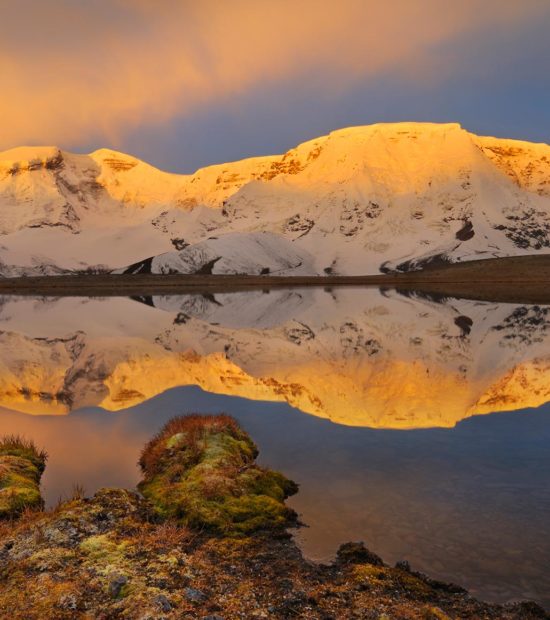
Hike the Highcountry. Face to face with a 13 000’ mountain.
On a scale of 1 – 5, five being the most challenging, two hiking boots is at the easier end of the spectrum.
1 boot = basecamp/dayhike easy
2 boots = easier backpacking trip
3 boots = intermediate level trip
4 boots = intermediate to advanced backpacking
5 boots = ask yourself are you really ready for this?
Expect whatever level you think might best fit you to be one level LOWER on our scale. Hiking here in Alaska is generally a step or three above what you’ll find in the Lower 48 states.
Realize that backpacking is never “easy”. You’re carrying from 35-50+ pounds on your back day after day. You’ll be hiking for a number of hours each day (varies trip to trip, day to day), and that’s not “easy” for most people.
That said, our “2 hiking boots” level should meet the need for most novice backpackers, and are generally what I recommend for families with younger kids, etc as well. Terrain challenges aren’t usually a problem, and the walking is somewhat more orthodox. You won’t be traversing 1 mile of steep sidehill covered in slippery rocks, or snaking through dense thickets of alder and willow.



